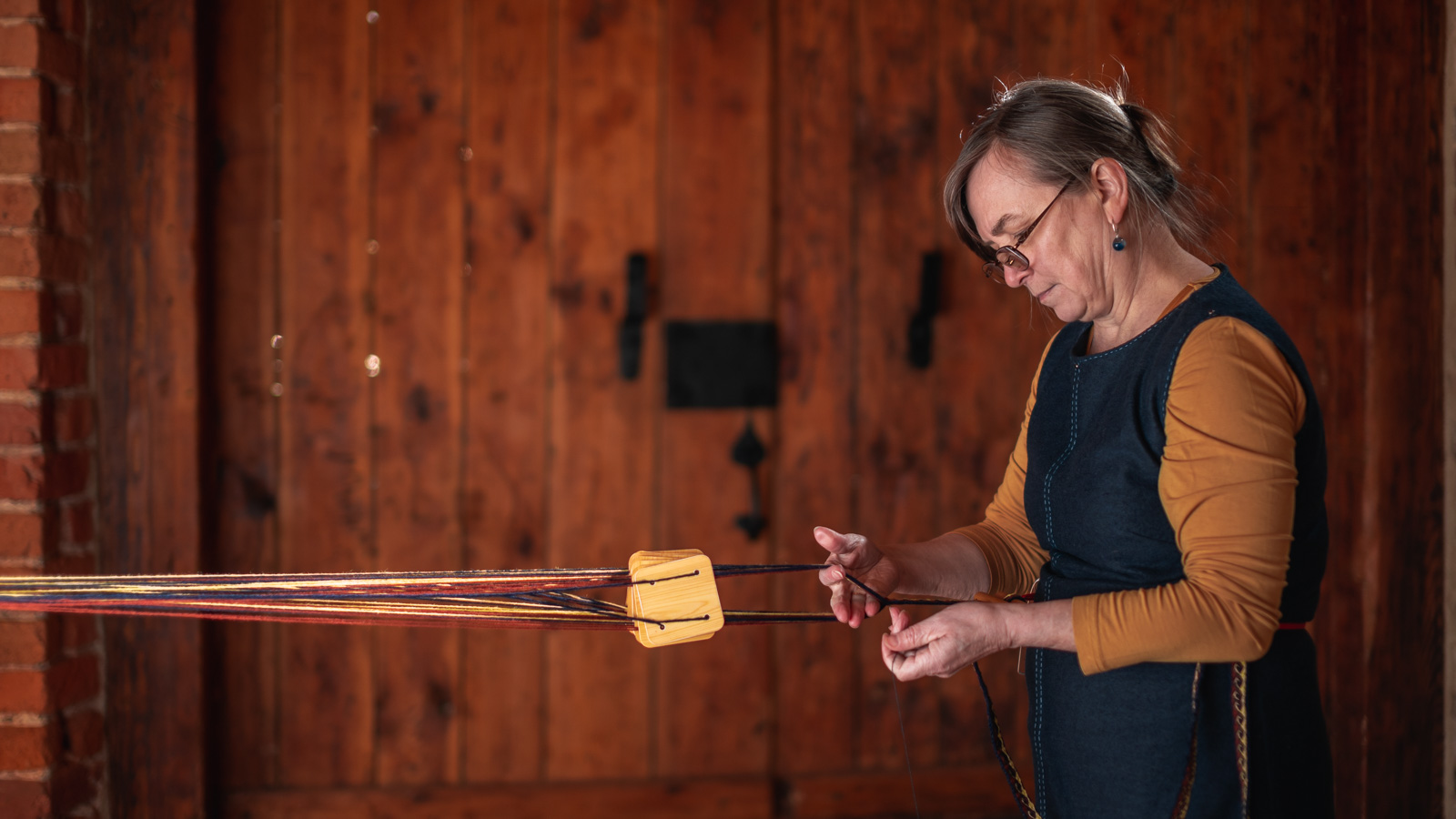Master's story

Karin Otsus
lace master
I have studied to be a handicraft teacher at the Tallinn Pedagogical Institute. There was also the first contact with the production of tatting lace. For years, I have taught children and now adults crafts at school. The textile handicraft department of Räpina Horticultural School has been my occupation since 2015. In addition, those interested in handicrafts can create fascinating and necessary things in Räpina Creative House. I have been deeply involved in weaving belts and fabrics, weaving gloves and socks, machine weaving and now mostly tatting lace.
Finding the right material has given the greatest impetus and courage to offer products with tatting lace to others. The threads for the production comes from Germany and have also been recognized as the best by tatting lace makers in other countries. It is important that I pollute the environment as little as possible. And the things I do will be beautiful in a hundreds years.
I make braided belts for a change. Just to hold sometimes something bigger between your fingers. And it’s fun to play with colors. The shuttle tatting are pretty tiny.
Long-term activities have taken time. It took years to find the materials before I was satisfied. When I received the material and saw that the product remains of high quality, I started to act more specifically. So high quality craftsmanship needs experience and a lot of practice.
I was able to practice thanks to the fact that I rode a male family members to a bicycle marathons and sat on the stump waiting with my handicraft. It can also be done at any training or meeting and to alleviate motor restlessness. The main thing, however, is that it is not a dull act and you have to be very careful.
In Estonia, there are less than ten people, who has profficiency in these techniques. Many such crafts were made in the pre-war republic, but economic and social change pushed these skills into oblivion. Now, thanks to the Internet, it is easier to exchange information and revive forgotten skills and techniques for the sake of beauty.

How do I do that?
Shuttle tatting lace is a knot lace, probably one of the most advanced developments in macrame technique. It is alleged that the shuttle tatting lace originated in France or Italy. Before the advent of industrial lace, shuttle tatting lace had a definite place in decorating clothing. At present, shuttle tatting lace makers can be found in online resources mainly in Germany, the USA, Japan, Portugal, Spain and Russia.
The main tool is small shuttles, a small crochet hook is also needed. The lace is made up of small, double-knotted knots formed around a thread. You can make miniature details as well as bedspreads, for example. Shuttle tatting lace is especially often seen as a bridal accessory.
Making a shuttle tatting lace is like solving a crossword puzzle – you have to think about the order of work in advance, you can’t miss the joints, because you can’t do it afterwards. Every node is important. Particularly fine areas must be made with the help of a magnifying glass. And it’s exciting!
In addition, I like that I can make simpler patterns anywhere – the main thing is to have light. Even in the woods on a stump. The final finish is, of course, at home under proper light and a magnifying glass.
To knit a braided belt, I use square wooden plates with rounded corners, with a hole for yarn in each corner. The more plates side by side, the wider the belt will be. Belt-length woolen yarns are made from the strings, they are attached to something at both ends and linen yarn is usually used for knitting. The braided belt is strong. In Estonia, for example, braded belts were also made for horse reins. Men put belts around the body once or twice, either on trousers, a long coat or a shirt. The tassels are left hanging in front.
Knitting itself is such a meditative activity. When all the preliminary work has been done, you just keep turning, you go through the weave and think your thoughts.
